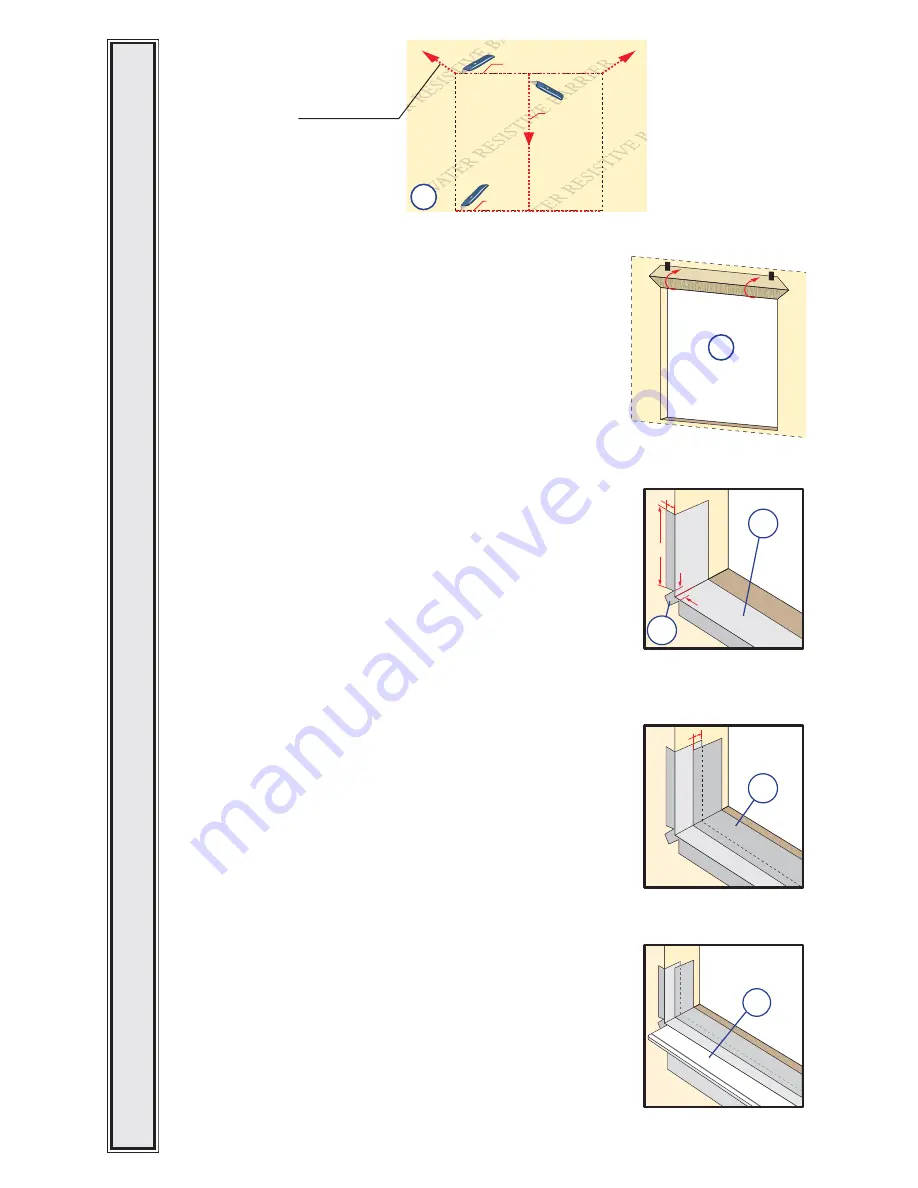
For DoorS USIng optIonaL SILL pan go to Step 1I.
Exterior
1D
4th cut:
Make a 6" cut up from
each top corner at a 45
o
angle to allow the water
resistive barrier to be lapped
over the fin at the head of
the door.
1st cut
2nd cut
3rd cut
Water Resistive Barrier
1C
C.
cut the water resistive barrier.
D.
Fold the water resistive barrier.
Fold side flaps into the opening
and staple to inside wall. Fold top flap up and temporarily fasten
with flashing tape.
E.
apply sill flashing tape #1.
Cut a piece of flashing tape 12” longer
than the opening width. Apply at the bottom of the opening as
shown (IE) so it overhangs 1” to the exterior.
Note: The tape is cut 12” longer than the width so that it will
extend 6” up each side of the opening.
F.
tab the sill flashing tape and fold.
Cut 1” wide tabs at each corner
(1/2” from each side of the corner) (1F). Fold tape to the exterior
and press firmly to adhere it to the water resistive barrier.
1F
1"
1/2"
1/2"
6"
1E
1"
1G
G.
apply sill flashing tape #2.
Cut a piece of flashing tape 12” longer
than the opening width. Apply at the bottom, overlapping tape #1
by at least 1”. DO NOT allow the tape to extend past the interior
face of the framing (1G).
In-swing doors:
If the wall depth is greater than 5”, add a third piece of flashing
tape. The flashing tape should come to within 1” of the interior face
of the framing.
Note: The flashing tape may not fully cover the framing members.
1H
H.
attach the aluminum sill support
or wood blocking to the exterior
of the box plate to support the edge of the door sill. Place the sill
support flush with the subfloor.
go to Step 2
DOORS
•
ALL
DOORS
•
ALL
DOORS
•
ALL
DOORS
•
ALL
DOORS
•
ALL
DOORS
•
ALL
DOORS
















